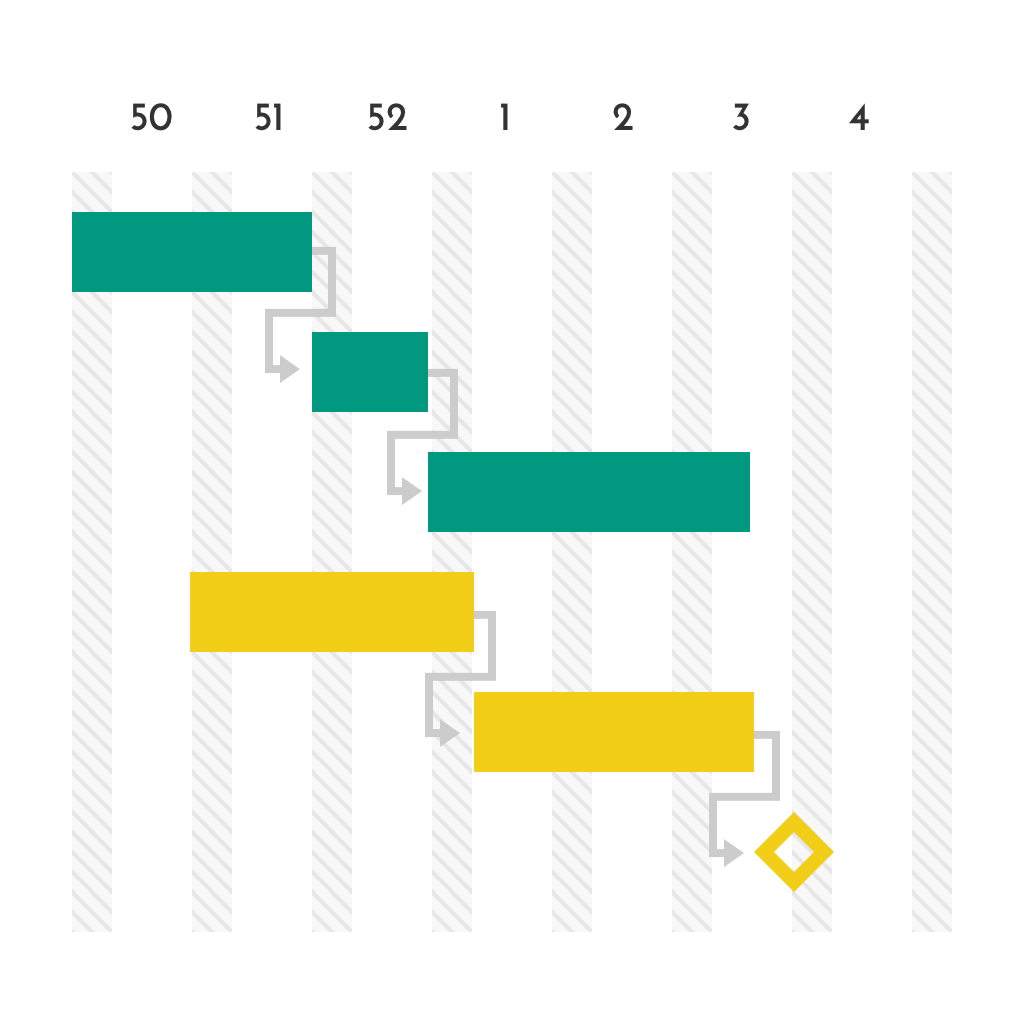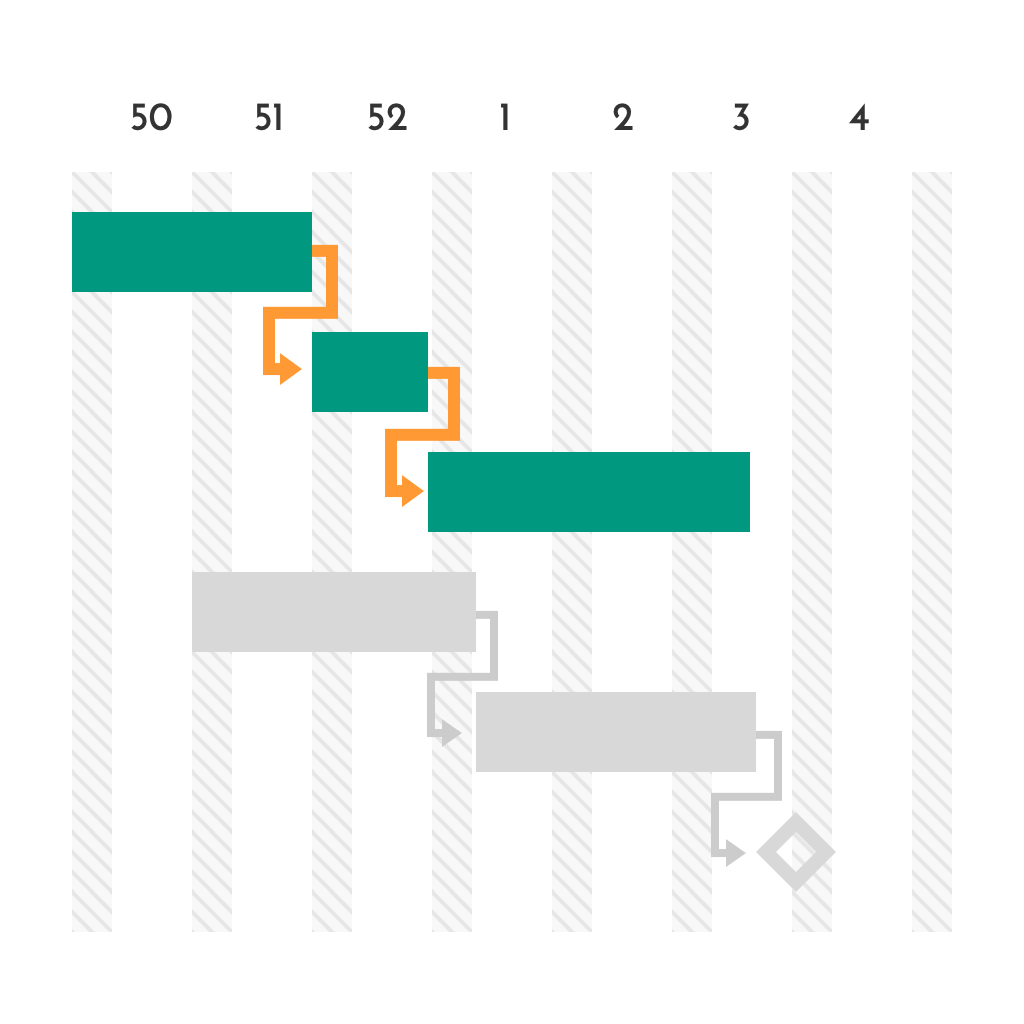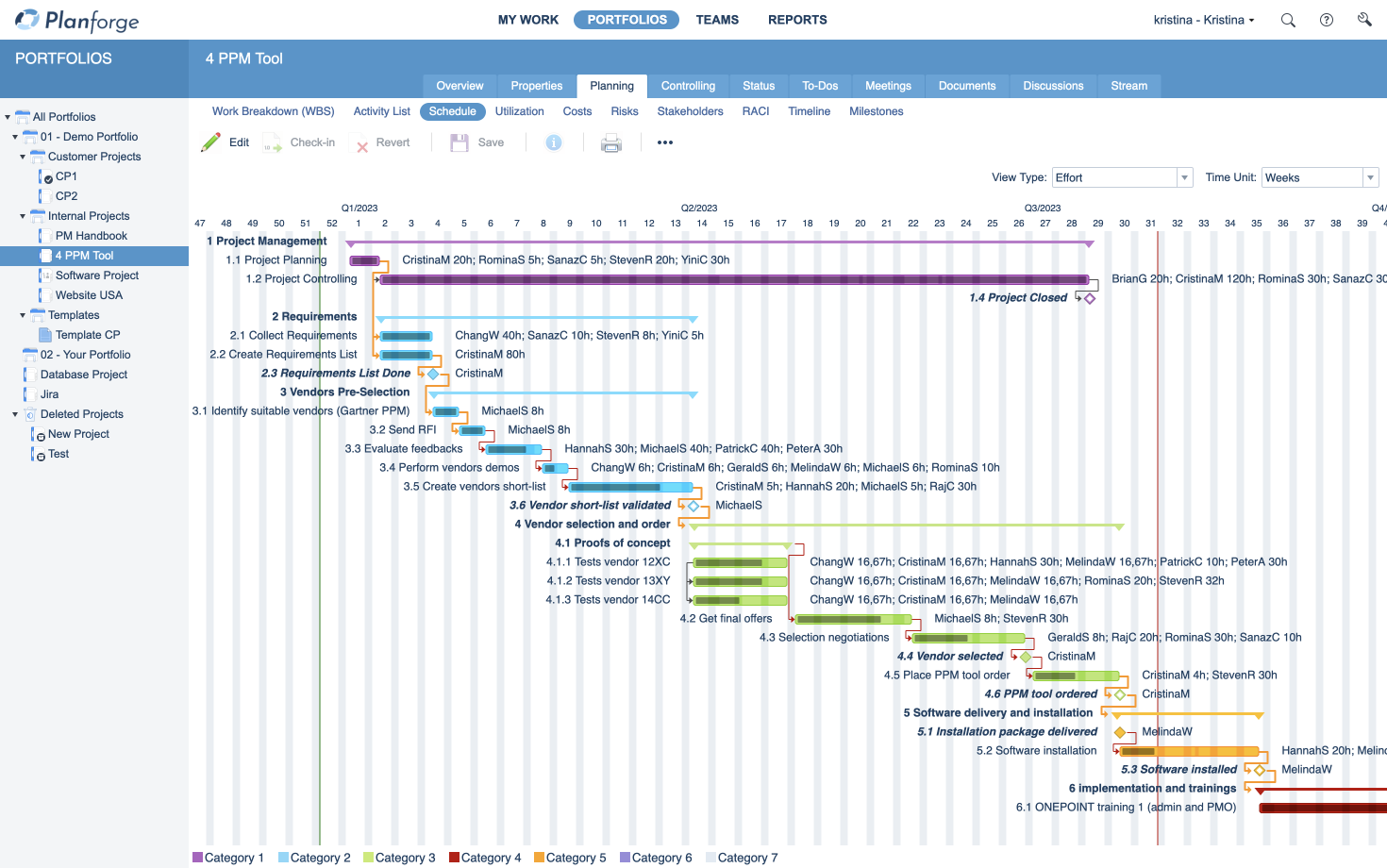The Gantt Chart explained
The method was named after the American engineer and management consultant Henry Gantt. He further developed the idea of Karol Adamiecki from Poland and helped to make a breakthrough of the method into the West.
The key characteristic of the Gantt Chart is its visual logic:
All work steps within a project are represented as horizontal bars
Thus, both their probable duration and dependencies on other activities become apparent.
Specific events, e.g. milestones or intermediate objectives are marked by special icons.

As it is immediately apparent when individual work packages have to be completed and which deadlines are binding, the project schedule can be optimized right from the start.
Creating a Gantt Chart Correctly
- All activities of the project are entered in the first column of the table.
- A horizontal time axis indicates the entire project duration. This can be divided into days, weeks or months. These time units correspond to structuring of the columns.
Now the appropriate time bar for the respective task is entered in each line. Sequences, overlaps and gaps (buffers) become immediately visible. For work package dependencies, there are established icons that indicate the nature of the relationship (e.g., "end-to-end": once package A is completed, package B can begin.) Also, project resources are often plotted as bars to map where bottlenecks are possible.
The schedule is based on the start date or the end date. Once this is set, further dates for milestones and individual activities can be fixed.
The Critical Path of Gantt
Some work steps are more flexible in terms of time, and can be pushed if necessary. On the basis of the critical path one can recognize those processes whose timely implementation is obligatory. A temporal shift of events along the critical path would have direct impact on the achievement of the target date. The marker cannot prevent delays, but it can indicate them early so that, for example, resources can be redistributed.

Update January 26, 2021:
I recently came across an interesting Example of how to create a Gantt Chart that you might find helpful.
Advantages and Disadvantages of a Gantt Chart
Advantages
- It shows a comprehensive picture of all project tasks including dependencies.
- It helps to set realistic timeframes.
- It is easy to understand for everyone involved.
- Processes are structured from the beginning and considered as a whole.
Disadvantages
- Required resources are displayed inaccurately: The size of the bars does not indicate how extensive or complex the respective activity is.
In conclusion, the following figure shows how the Gantt Chart is displayed in a project management tool:








 Jira
Jira
 Confluence
Confluence
 SAP
SAP
 API
API



